Camouflage test: Phantomleaf – WASP I Z3a in the field
Introduction
One of the bigger surprises in 2023 was the introduction of the cooperation between Phantomleaf and Mil-Tec, resulting in the release of the WASP I pattern family, which is exclusive to Mil-Tec. For those of you, who have not read the backgrounder to this collaboration, feel free to take a look at the overview article. In it there are also several pictures and teasers of the other patterns, which are currently available.
Even though I already presented the various patterns, including pictures in the field, a more thorough field test of each pattern will follow.
So today we are starting with WASP I Z3a. And as always let’s go into the usual methodic remarks, before looking at the pictures.
Methodic Remarks
As always I want to point out several important aspects beforehand. First of all, I do not claim any scientific standard with my camouflage comparisons. I also conduct them with my best knowledge and the available resources.
The pictures are usually taken at the same locations I always use for my camouflage comparisons. That way you can compare the various field tests I have done so far with each other.
Before I start, please consider the following – as always:
I did not edit the pictures in any special way, except the following:
- Lens correction
- Watermark
- Blurred my face out if necessary
- .jpeg compression to make it web compliant
- I always do a proper white balance to make colors appear the way they are.
A short explanation to the environment and the procedure:
The patterns are tested in a Central European environment. Information about the various locations will be stated in the subsections. The pictures usually portray three different positions:
- Standing in the open (to get an idea of the pattern in this particular surroundings and if the colors match it).
- Kneeling.
- The prone position (to mimic basic, up to ideal concealment without using enhancements).
As always I photographed the pattern with a wide angle lens at first and then with 35mm focal length, which mimics the actual picture the human eye would perceive at this distance. Having in mind the three different positions mentioned before, I usually end up with 6 pictures of each location.
Furthermore:
Given the amount of pictures in my field tests, I will continue with my modus operandi from previous camo reviews and not describe or comment on each picture. Instead I will give a more thorough analysis at the end of each subsection.
With that being said, let’s take a closer look at the pictures themselves.
Phantomleaf WASP I Z3a
Location 1
This one worked out quite well as a replacement for a previous site, which was lost to deforestation. It is a typical European mixed forest with a high foliage canopy and some basic bushes, ferns and little trees on the ground. The floor is covered with tree trunks and cut branches, which change in color depending on the season.
The pictures were taken in early Summer so the environment is mostly lush green in contrast to the gray and brown of the trees. As a result of the sunny day, there is backlight and light shadows.
The camera is standing roughly 20 away from the human silhouette.
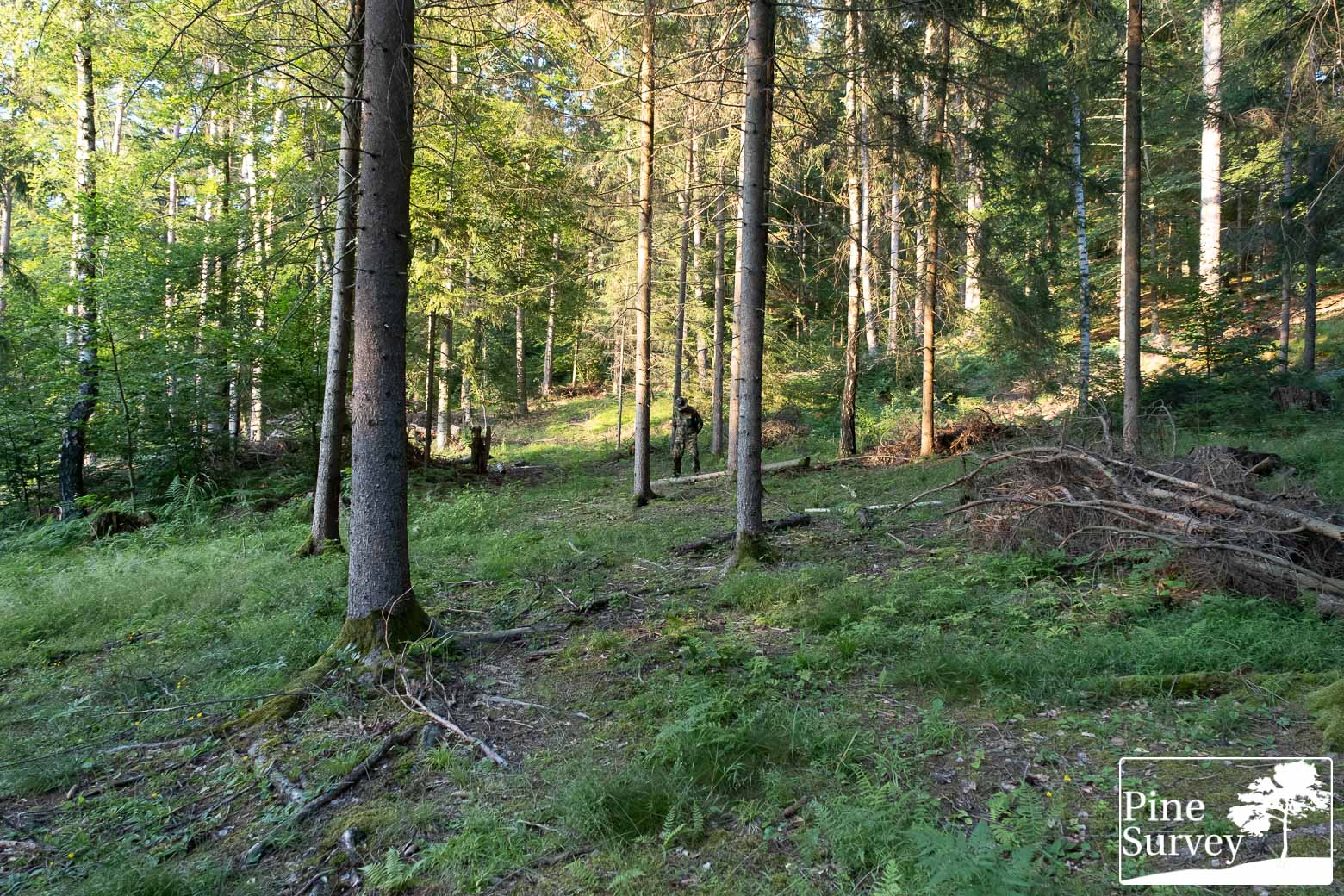
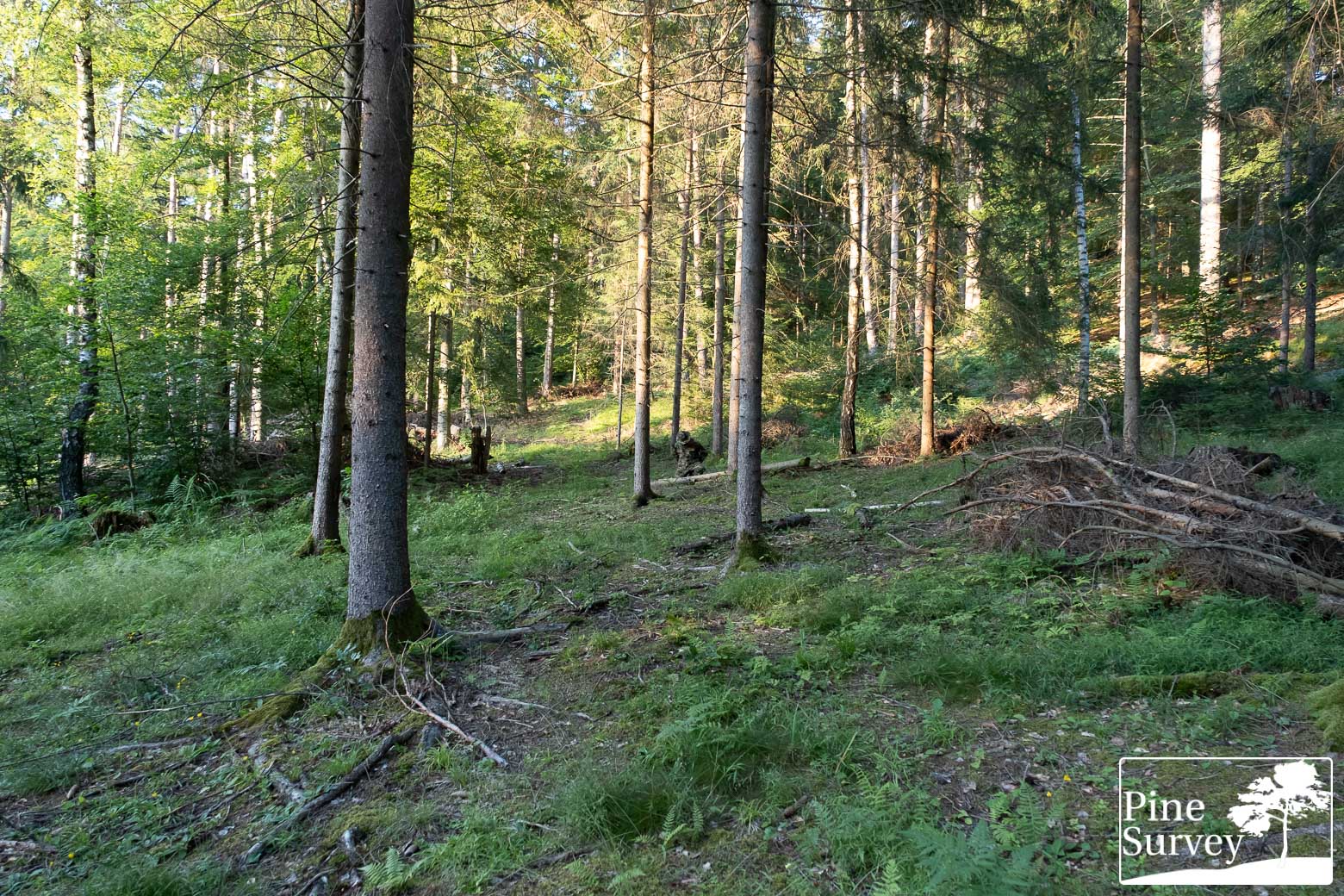
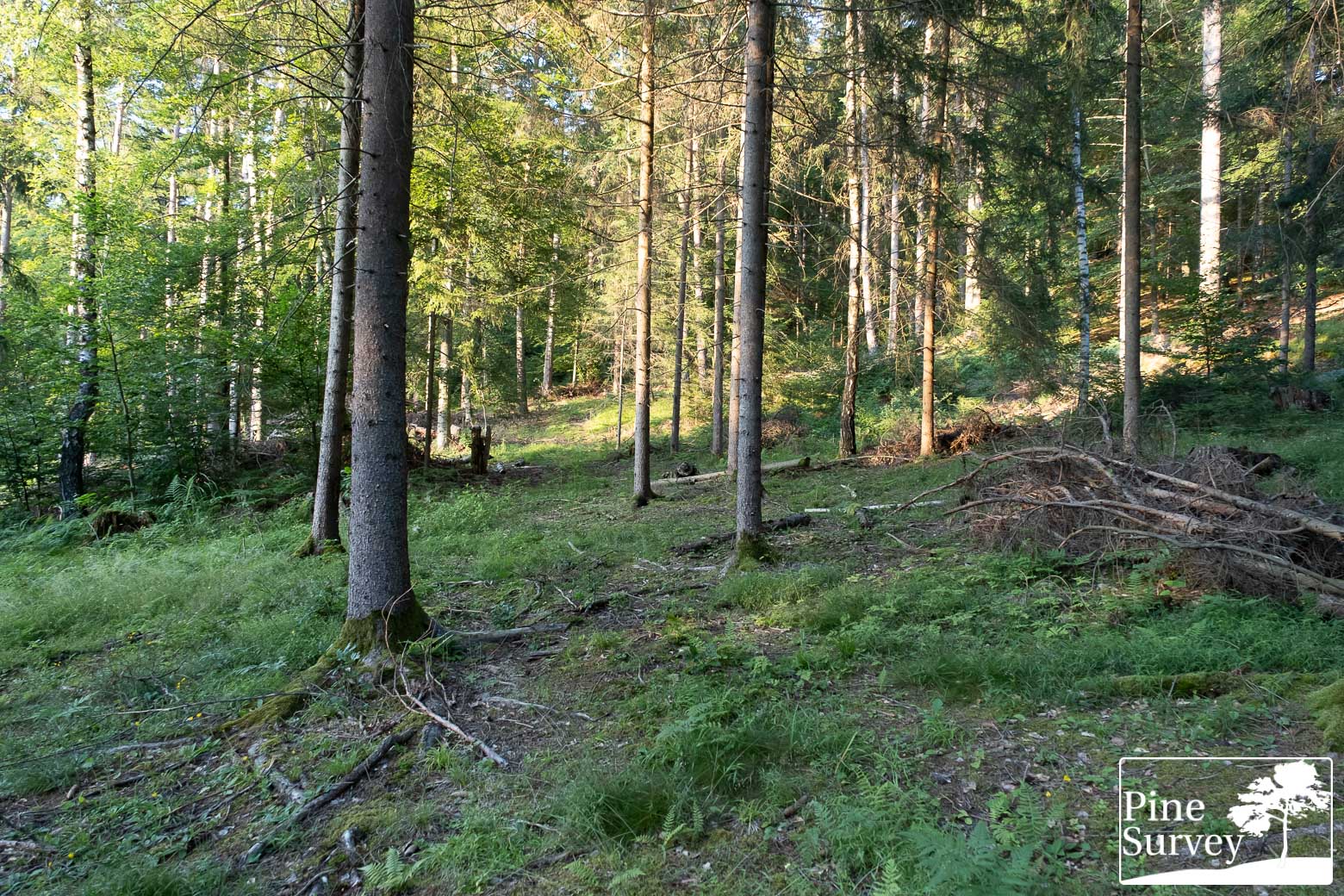
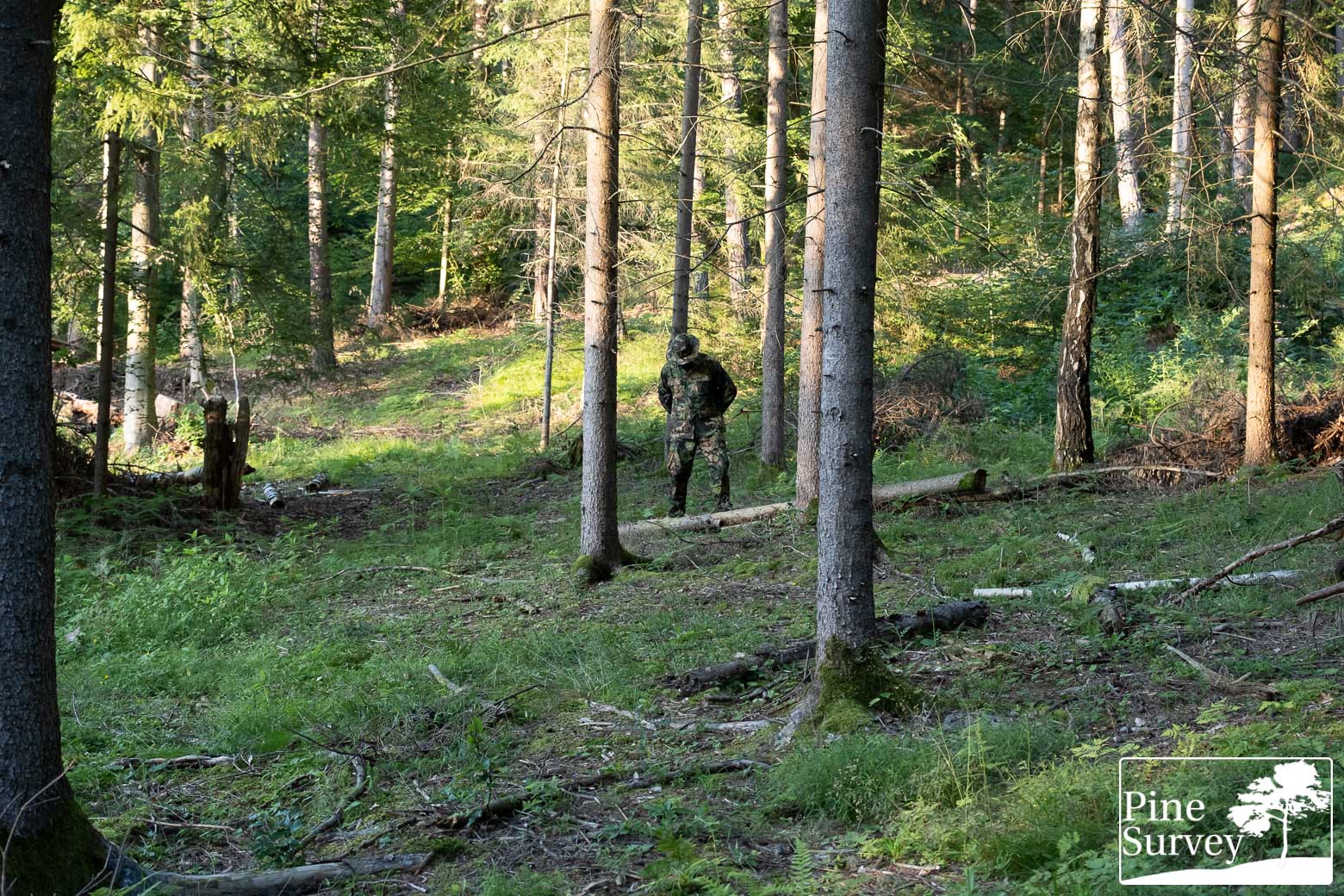
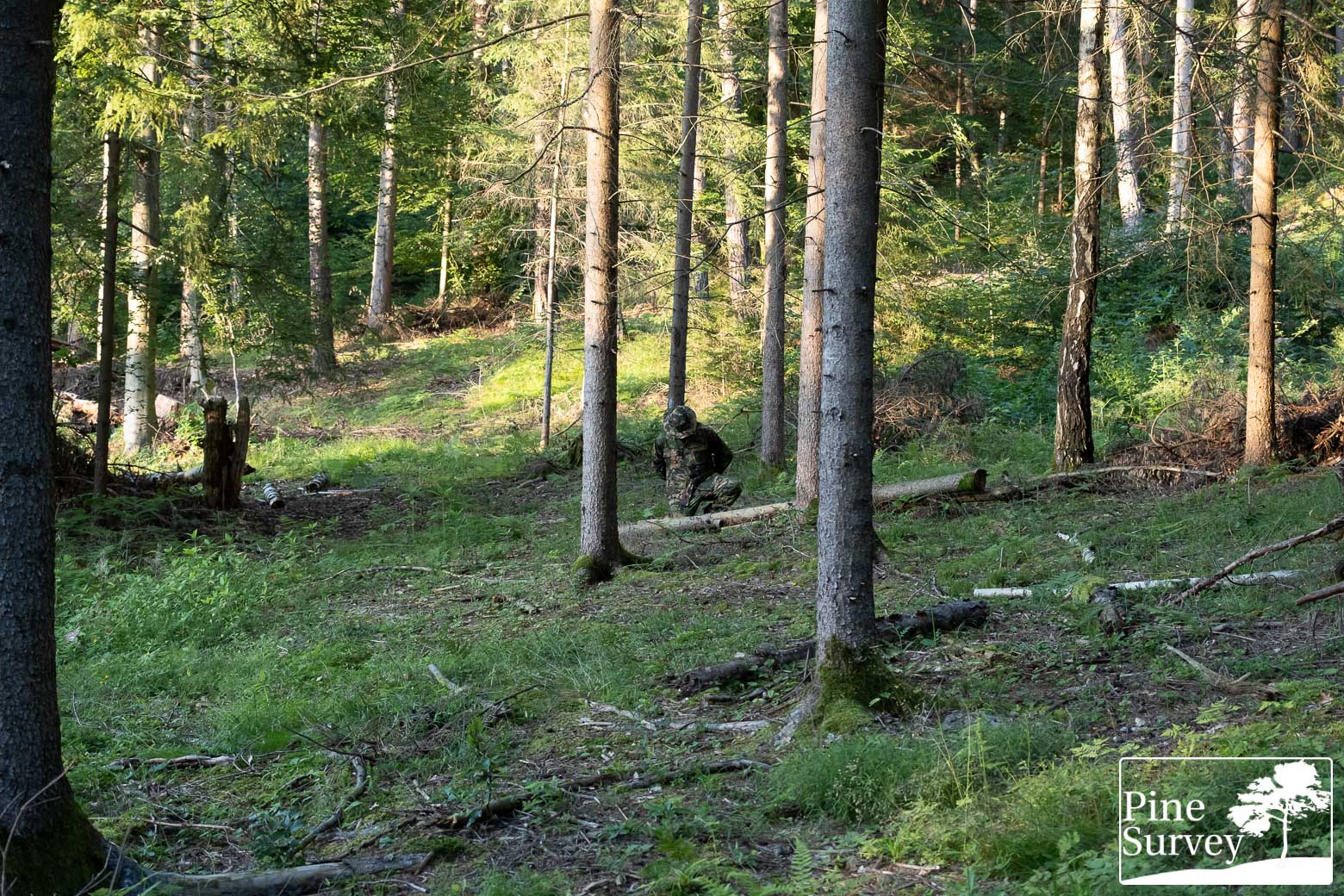
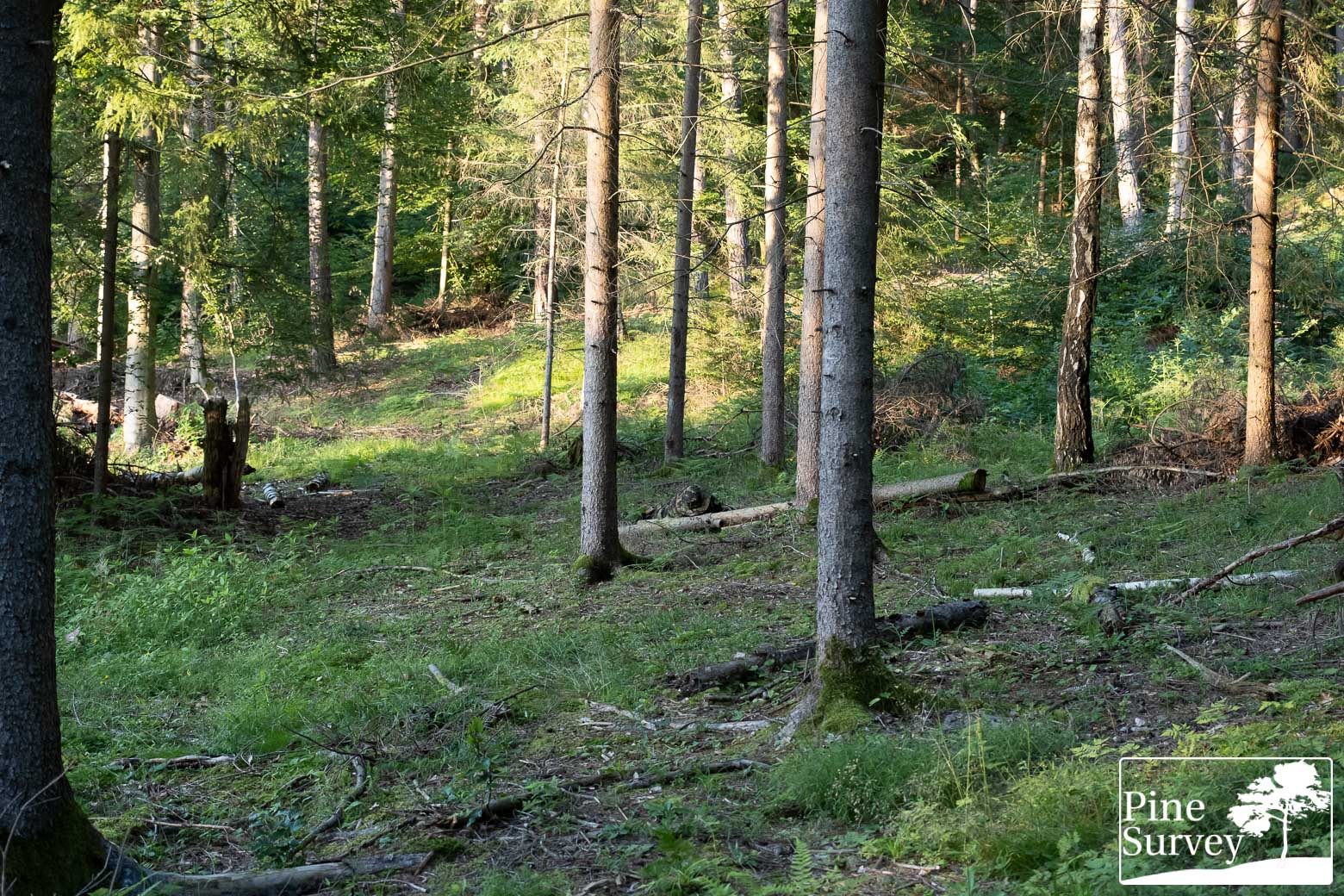
Observations – Location 1
Having in mind that the light is casting considerable shadows at this time of the day and from the given perspective, it comes to no surprise that Phantomleaf WASP I Z3a is appearing rather dark in this particular setting.
Especially when standing, the contrast of the legs is easily visible. At the same time the bright light brown macro elements break up the dark silhouette and merge with the tree in the background. When kneeling, the blending and disruptive effect gets stronger, being only weakened by the strong shadow, which the torso is casting at this angle. At the same time, it does not appear unnatural, when looking at similar shadows in the vicinity. When lying down, the pattern easily blends into the surroundings, as it has the least visual exposure.
When looking at the pictures with 35mm focal length, the macro elements are much better visible. As the background is brightly lit by the sunlight, the darker silhouette stands out because of the developing backlight. However, when kneeling, the pattern immediately shows its effectiveness by having similar green tones as its surroundings, while the brown not only breaks up the silhouette, but also blends with the dead vegetation around. The blending and disrupting becomes more apparent, when looking at the boonie during the prone position.
Location 2
The second location is a mixture of deciduous and coniferous forest, which changed considerably, because of a huge pile of cut branches on one side. Just like last year, very persistent ferns are growing in the front.
The pictures were taken in the late afternoon under a clear sky and the camera is standing roughly 15m away from the human silhouette. Overall the location and the background is in the shade, providing a homogenous brown, green environment. As a result of the low sun, shadows are clearly visible.
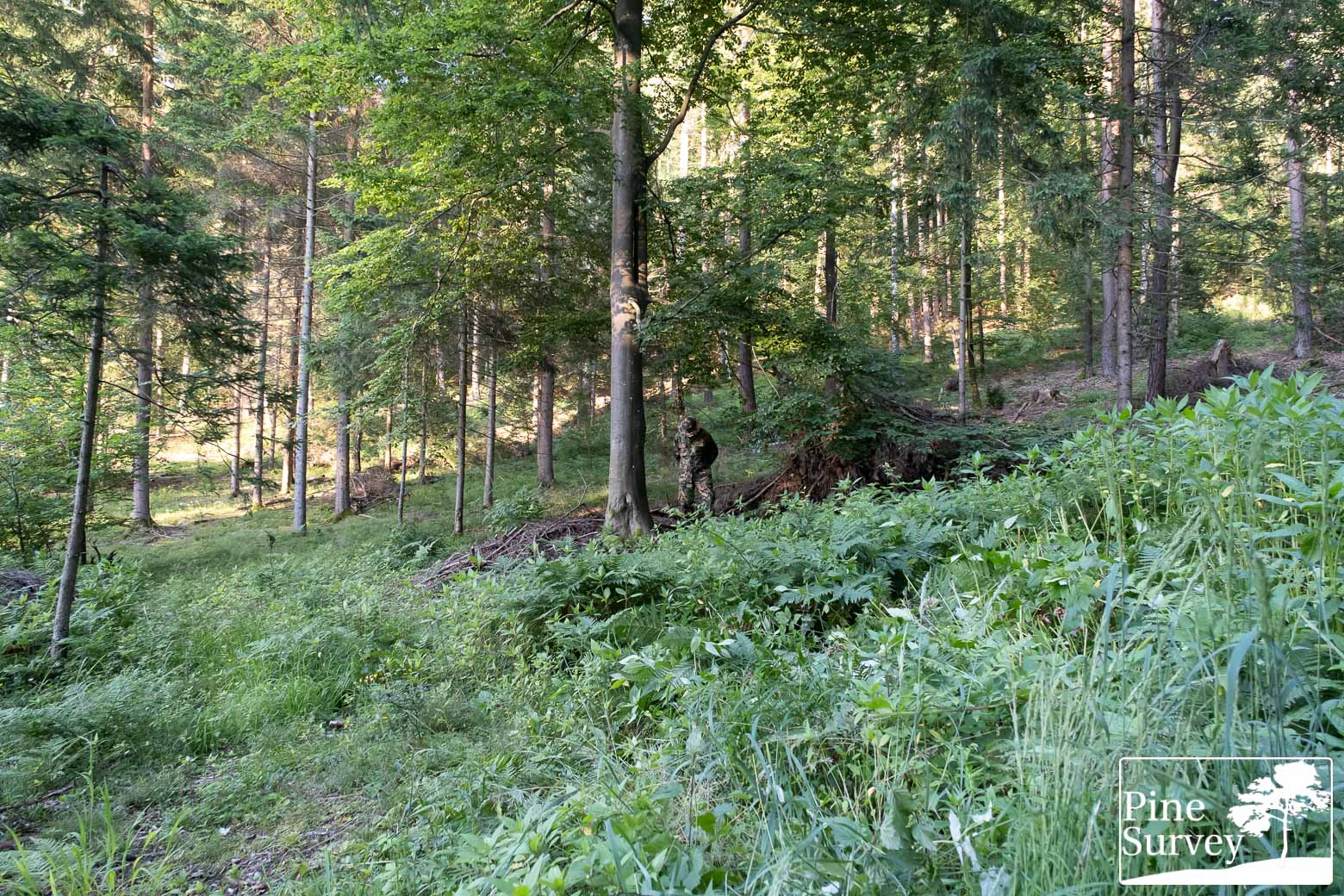
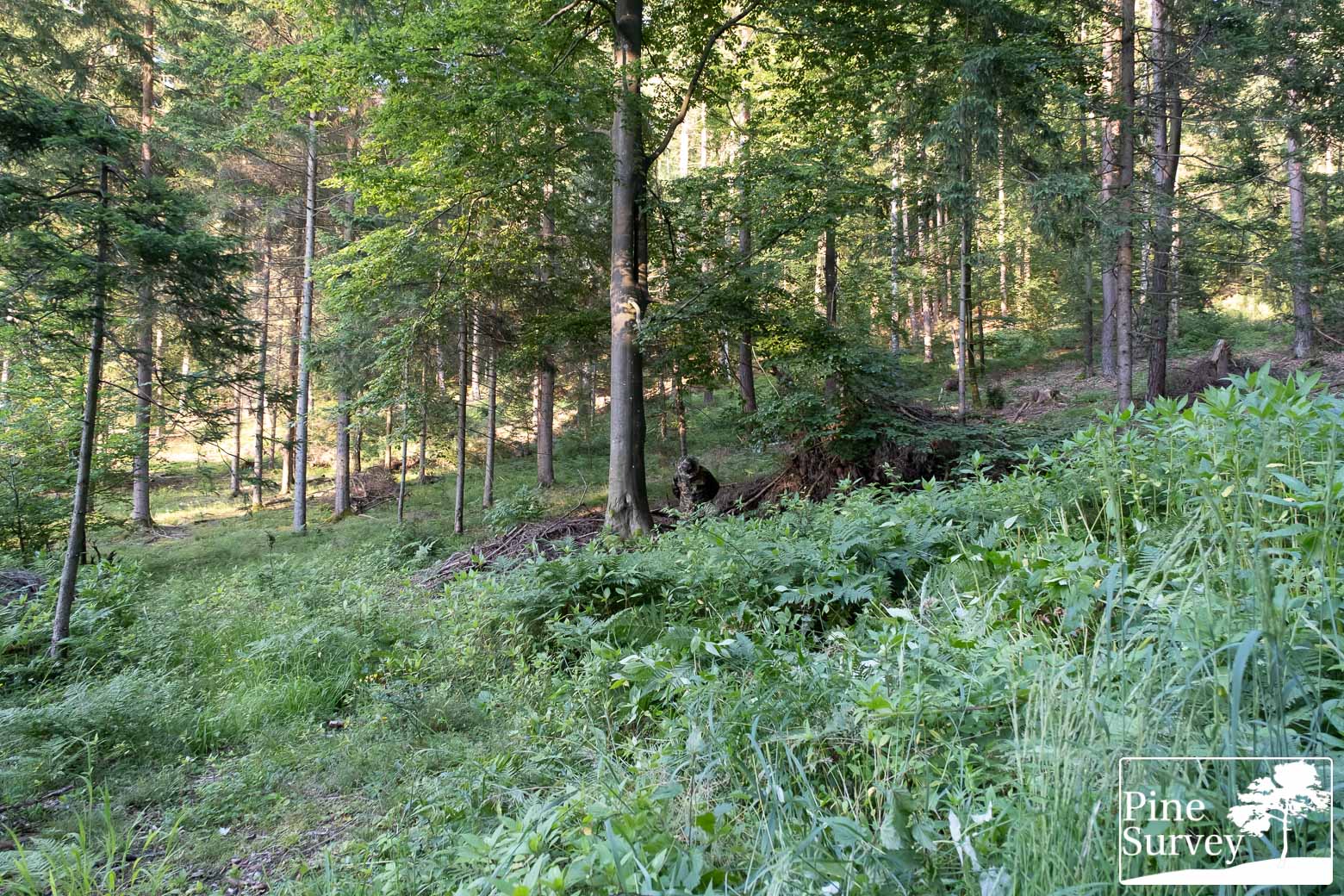
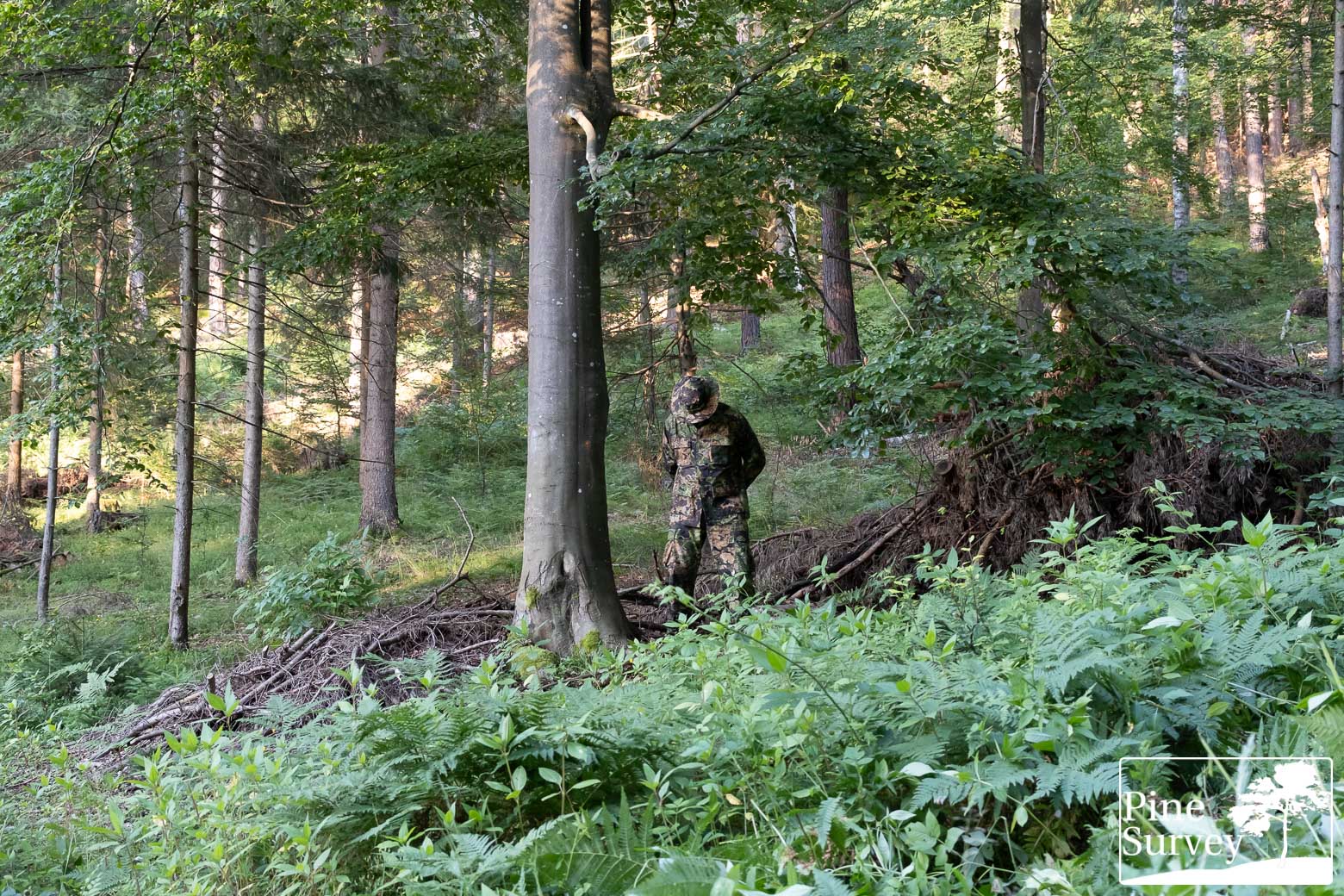
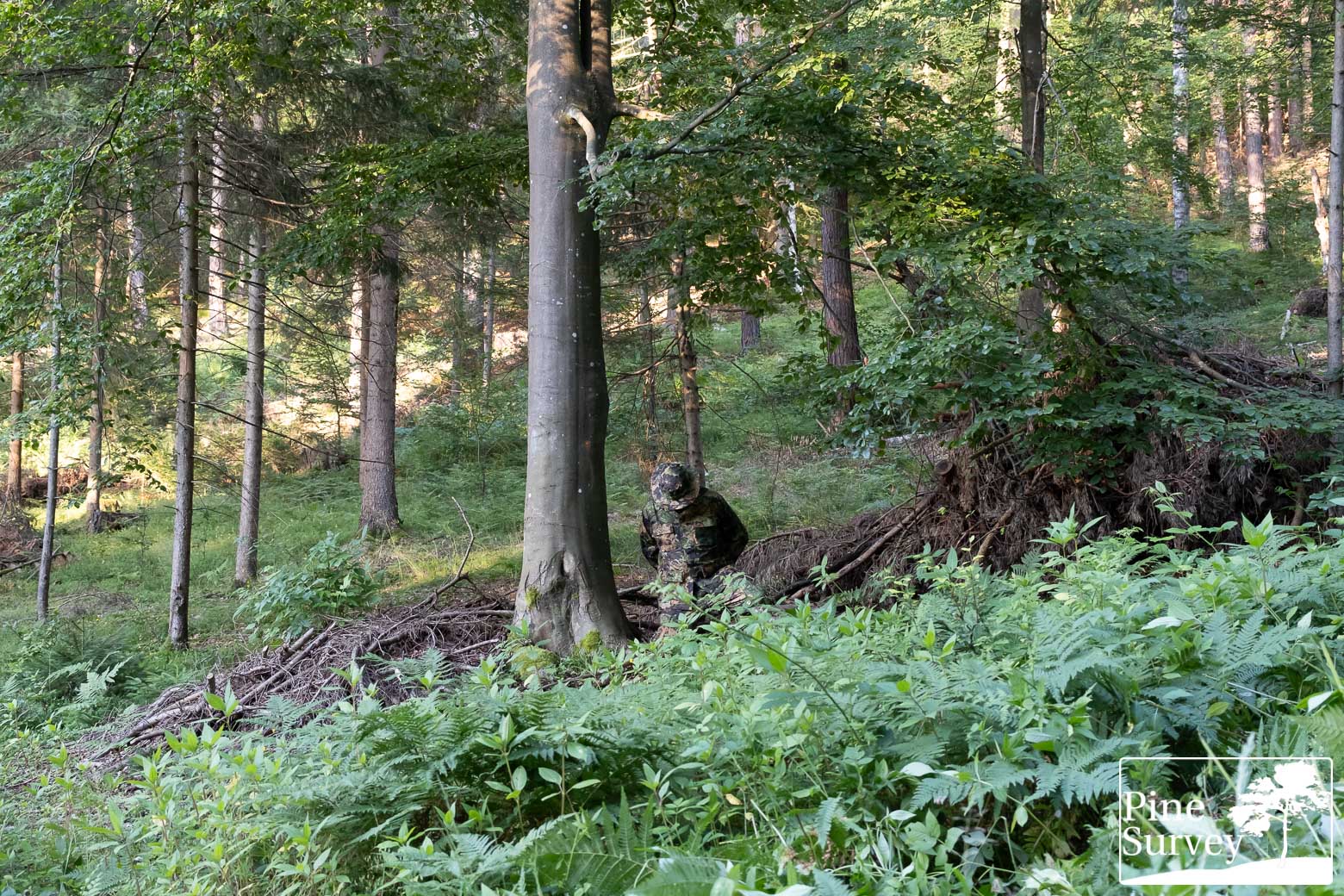
Observations – Location 2
The second location suffers from the same lighting conditions as location 1. As a result, the backlight is considerable, creating a large black spot when standing. At the same time the left side of the body is disrupted by the macro elements of Phantomleaf WASP I Z3a. The blending effect of the brown color is working excellently while creating that sharp contrast to the dark green color, which acts disruptive. While the kneeling position does not get rid of the shadow, it does improve in the overall silhouette disappearing. The brown colors merge with the surrounding and the green blends effortless into the background.
These aspects can be closely observed when looking at the pictures with 35mm focal length. The green elements of WASP I Z3a blend into the background, while the contrast of the brown is similar to the colors of the dead wood in the immediate surroundings. This is even more the case when kneeling down. That being said, the dark shadow obviously is an eye catcher.
Location 3
Since both location 1 & 2 felt a bit unrepresentative because of the light, I actually moved the perspective to a spot between 1 & 2 with the sun being directly behind the camera, resulting in a frontal illumination of the camouflage pattern, thus providing an additional view.
The time and and environment is the same as above, distance is roughly 5-10m from the camera
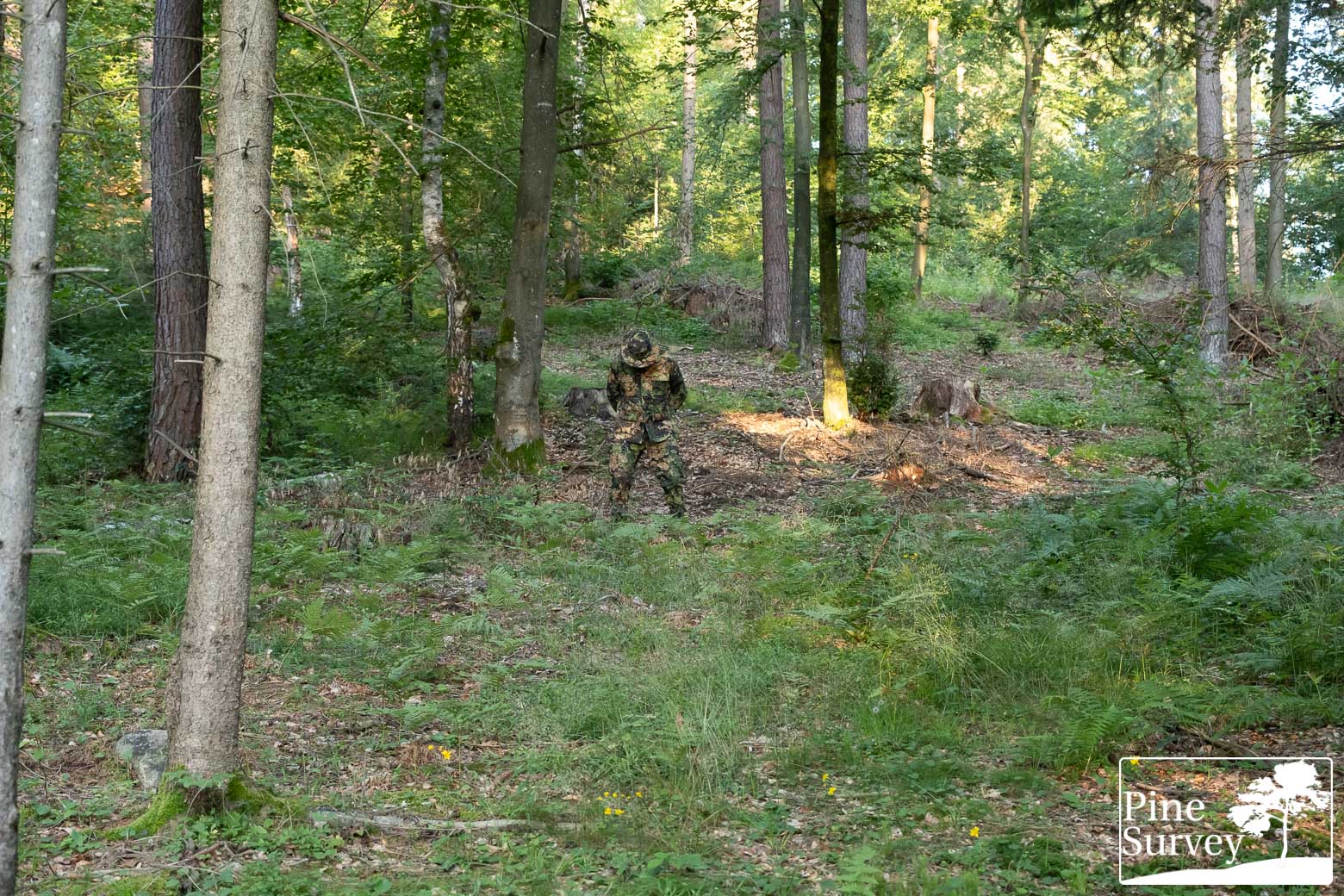
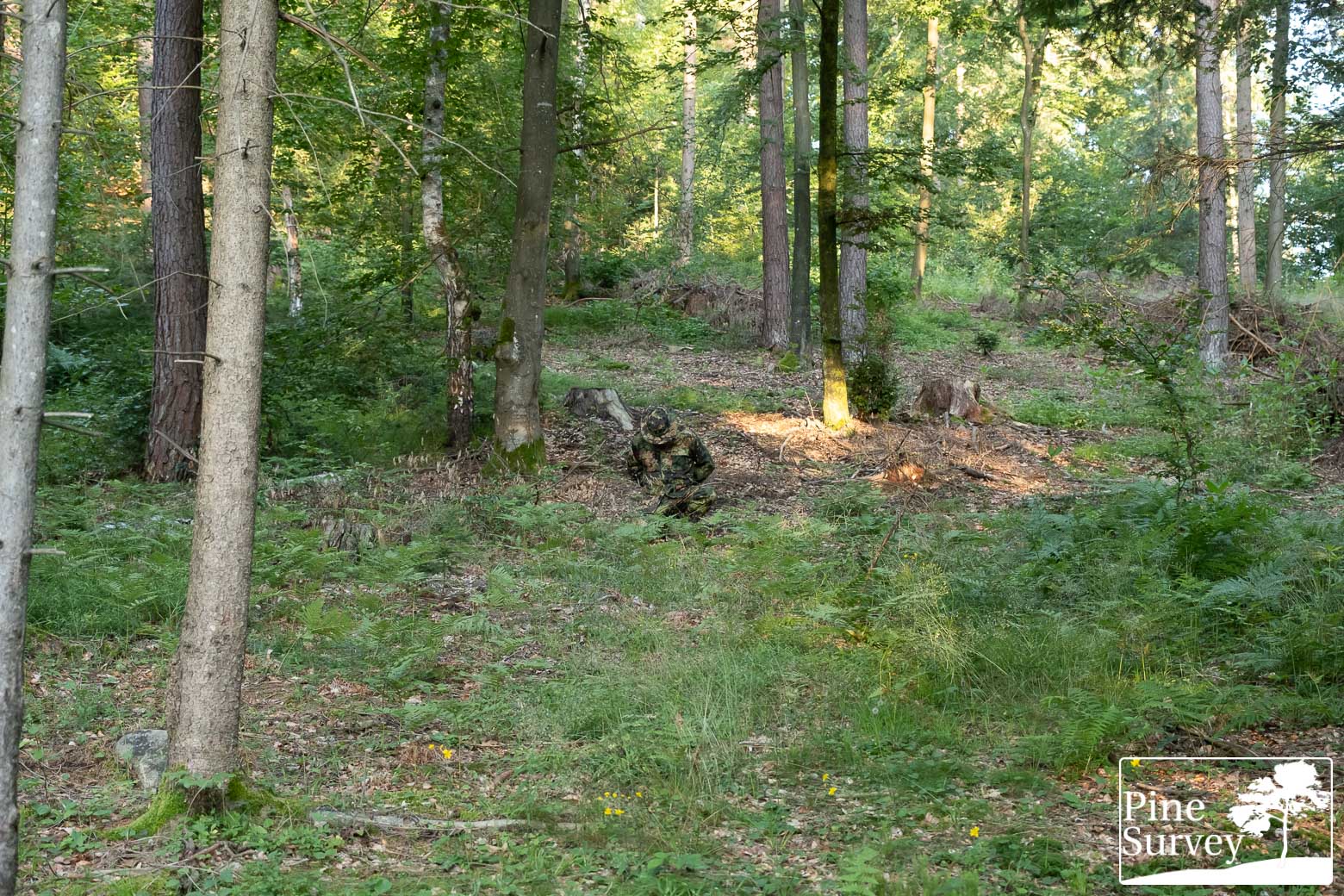
Observations – Location 3
As the two locations were not only a tough challenge for Phantomleaf WASP I Z3a, but also myself as photographer and basically acted as examples of the pattern having to work outside of its comfort zone, I decided to balance this out by doing something everyone should do when trying to camouflage: Move according to the landscape. So location 3 is an excellent example of making use of the terrain and making WASP I Z3a work to the users advantage.
When standing, it is clear why the pattern has the strong contrasts of light brown and green as it perfectly fits the surroundings of the leaves on the ground, contrasted by the lush green of the grass. So when kneeling down, the actual blending effect becomes even more impressive. This particular instance is an excellent example of the importance of the combined work of blending and disruption. The macro, midi and micro elements are not only providing the disruptive effect by using strong color contrasts, but also manage to blend effectively into the environment, by using the right colors.
Addendum
As always I want to add a few more pictures to get a better grasp of the camouflage pattern. Especially around leaf covered forest floor, the strong contrast of Phantomleaf WASP I Z3a comes into play, making it an effective pattern. The following pictures provide an excellent example.
The close ups show a better picture of the pattern itself and how its organic shapes contribute to the effectiveness of Phantomleaf WASP I Z3a.
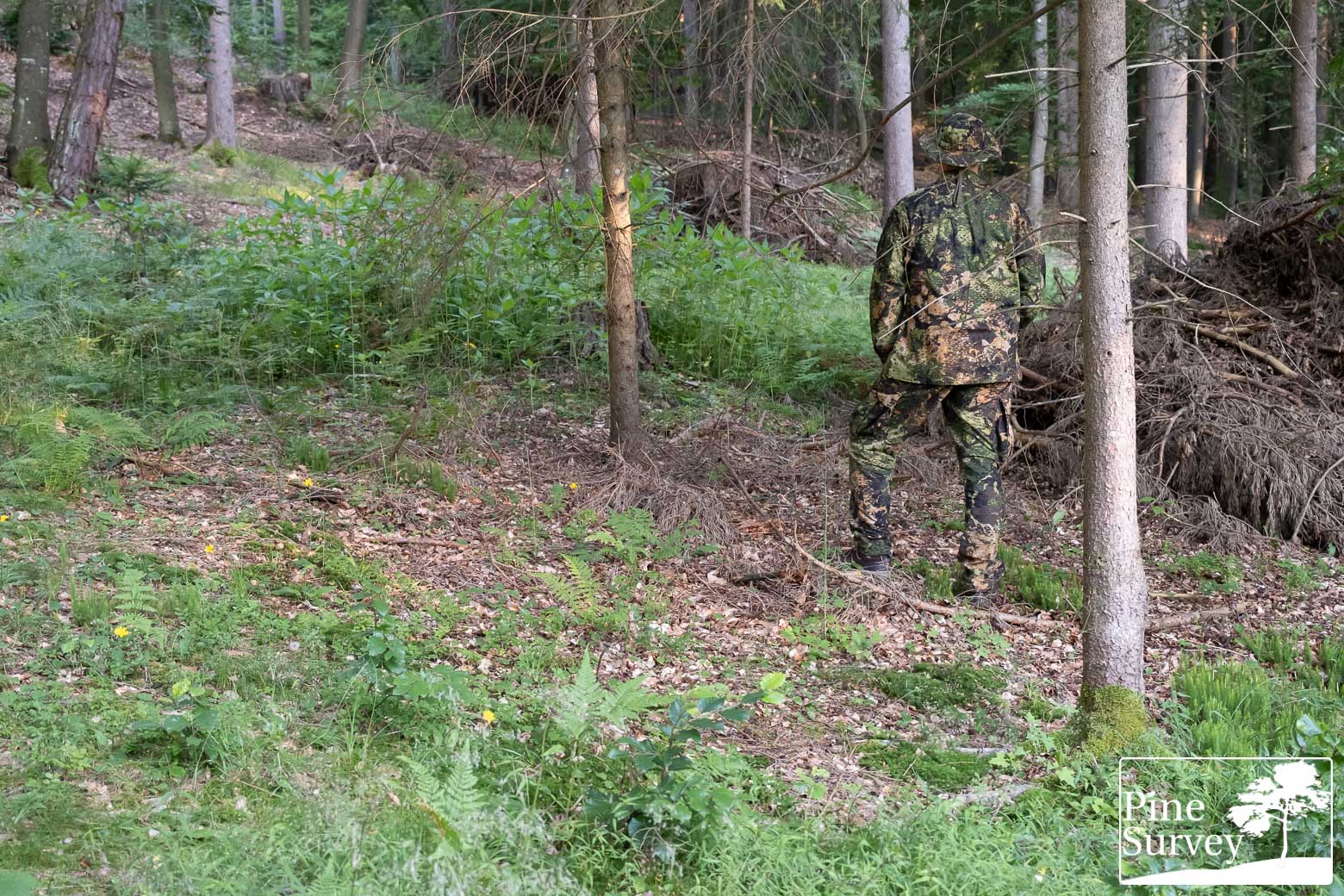
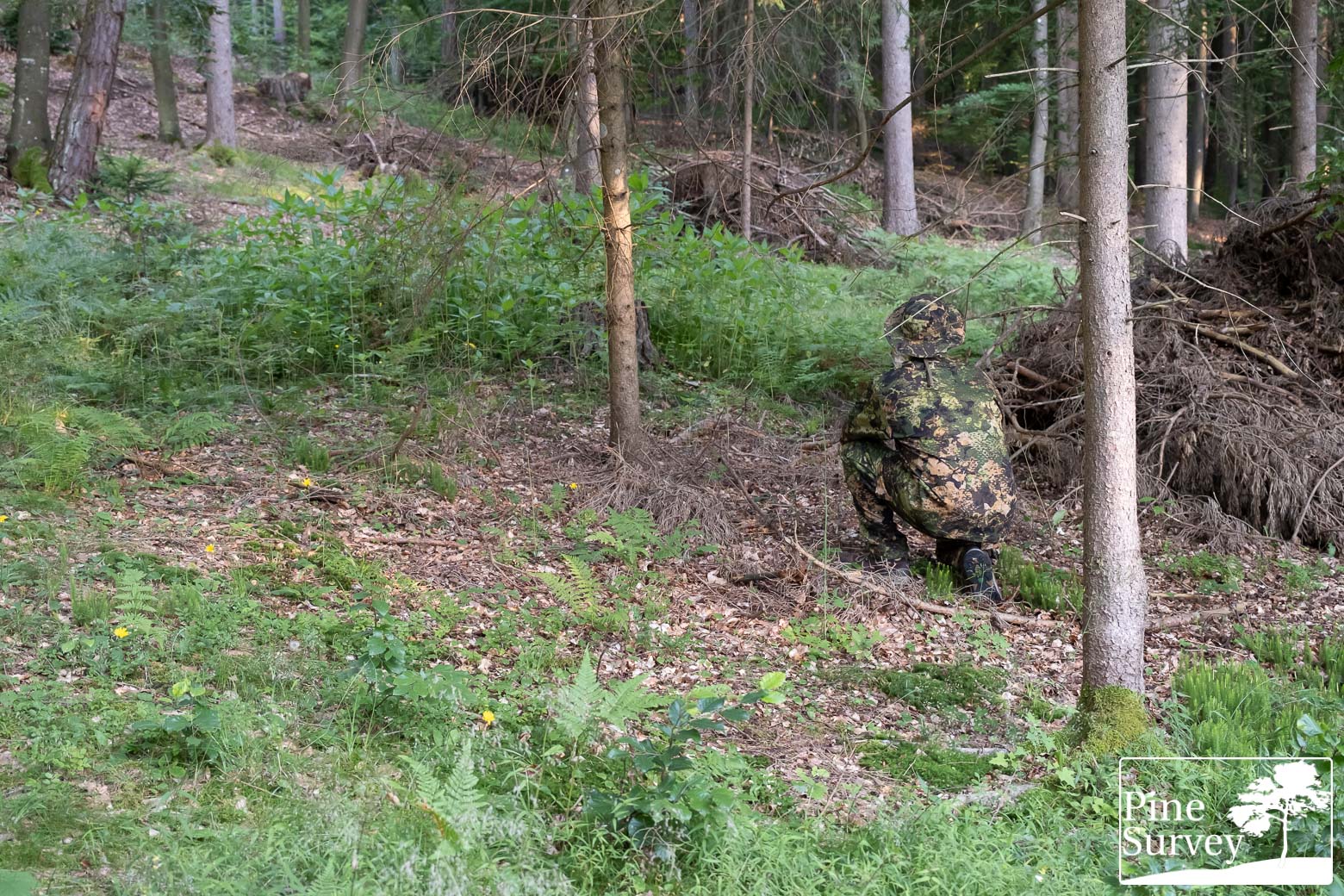
Late autumn
Here are some very recent pictures I took during late Autumn, with plenty of dead leaves, and a wet vegetation. In this environment, Phantomleaf WASP I Z3a really shines – figuratively speaking. Not only do the colors fit the green moss, and gras, but also the dead brown leaves and twigs. The disruptive pattern with its high contrast does the rest. The pattern works very well, even in close proximity.
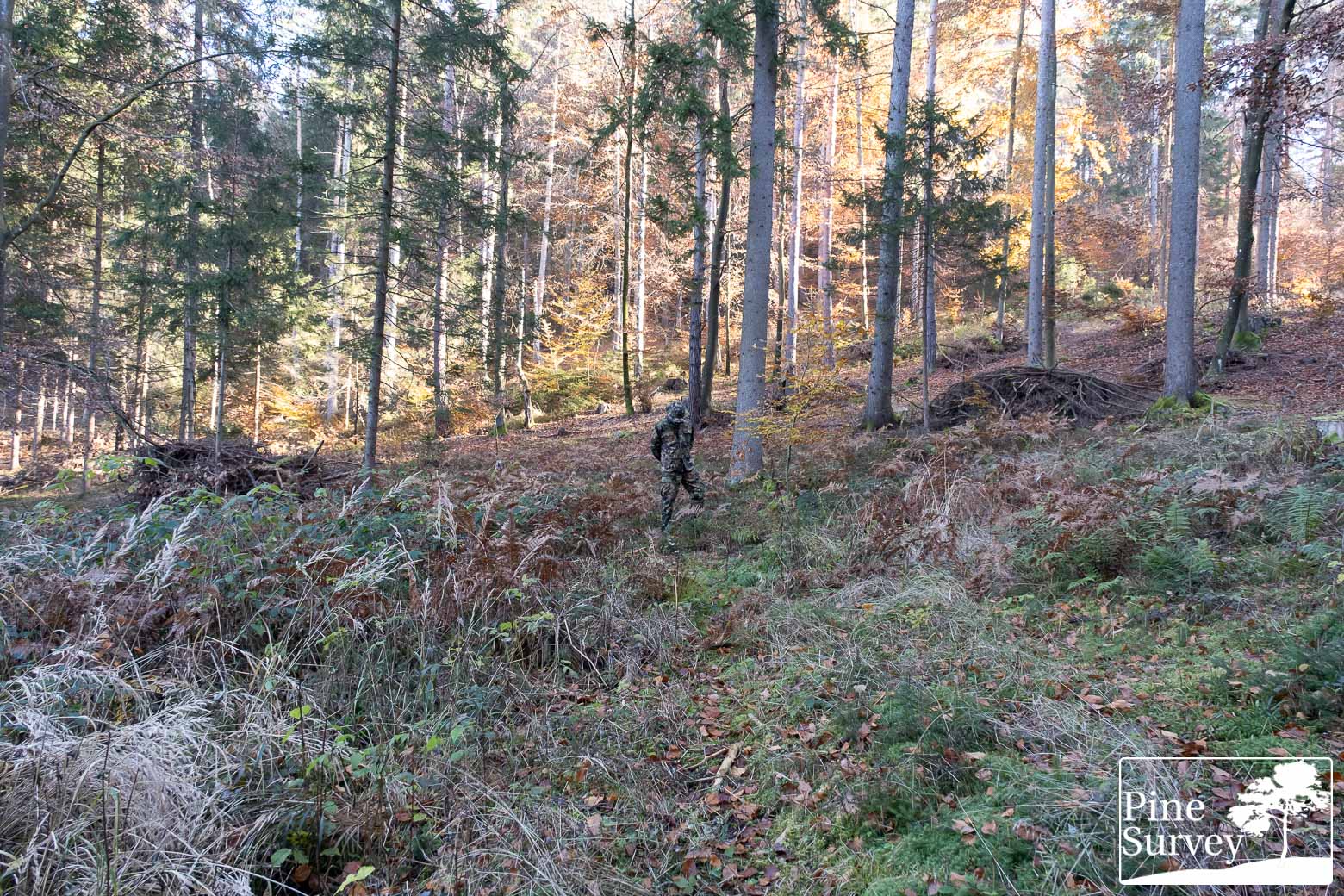
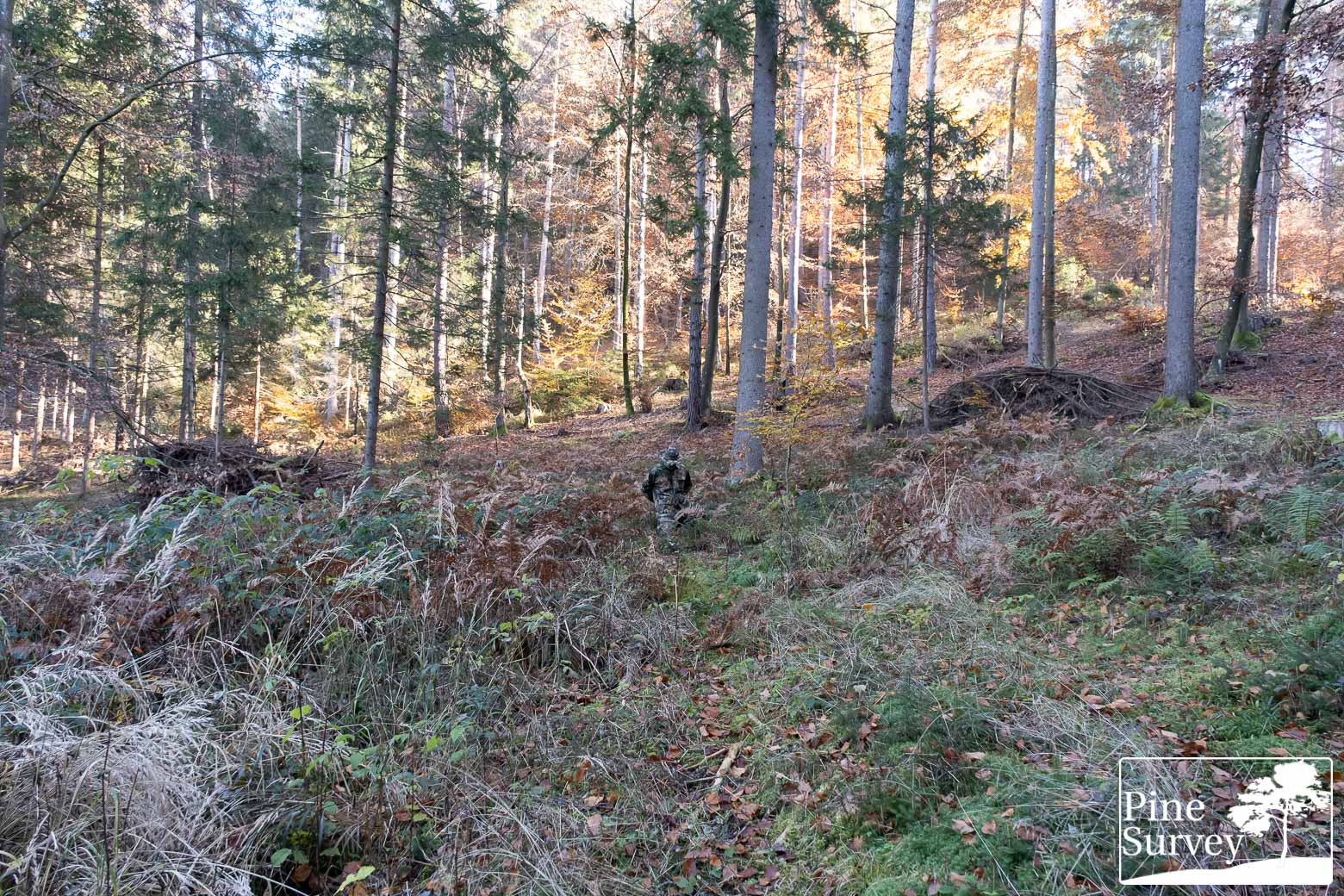
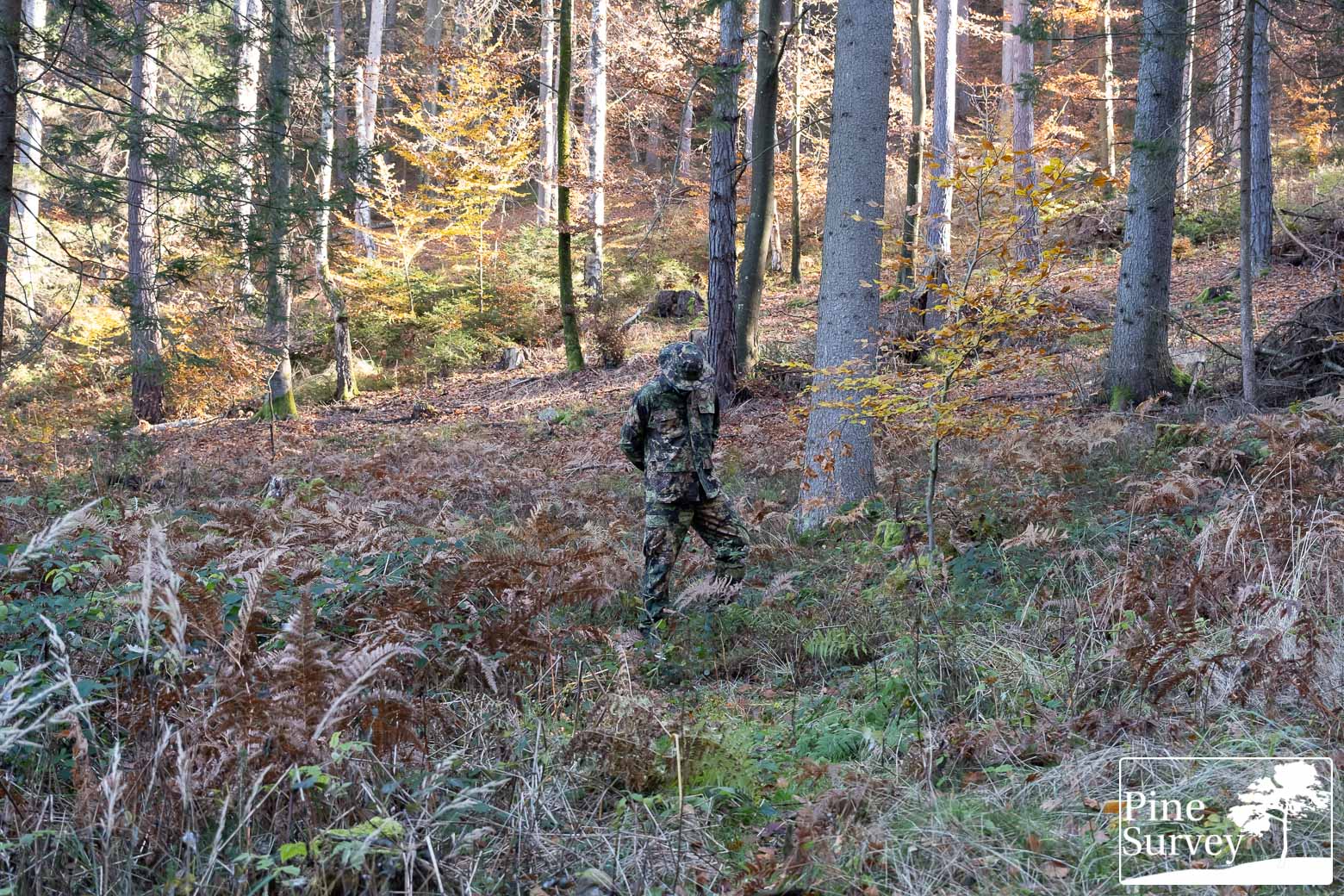
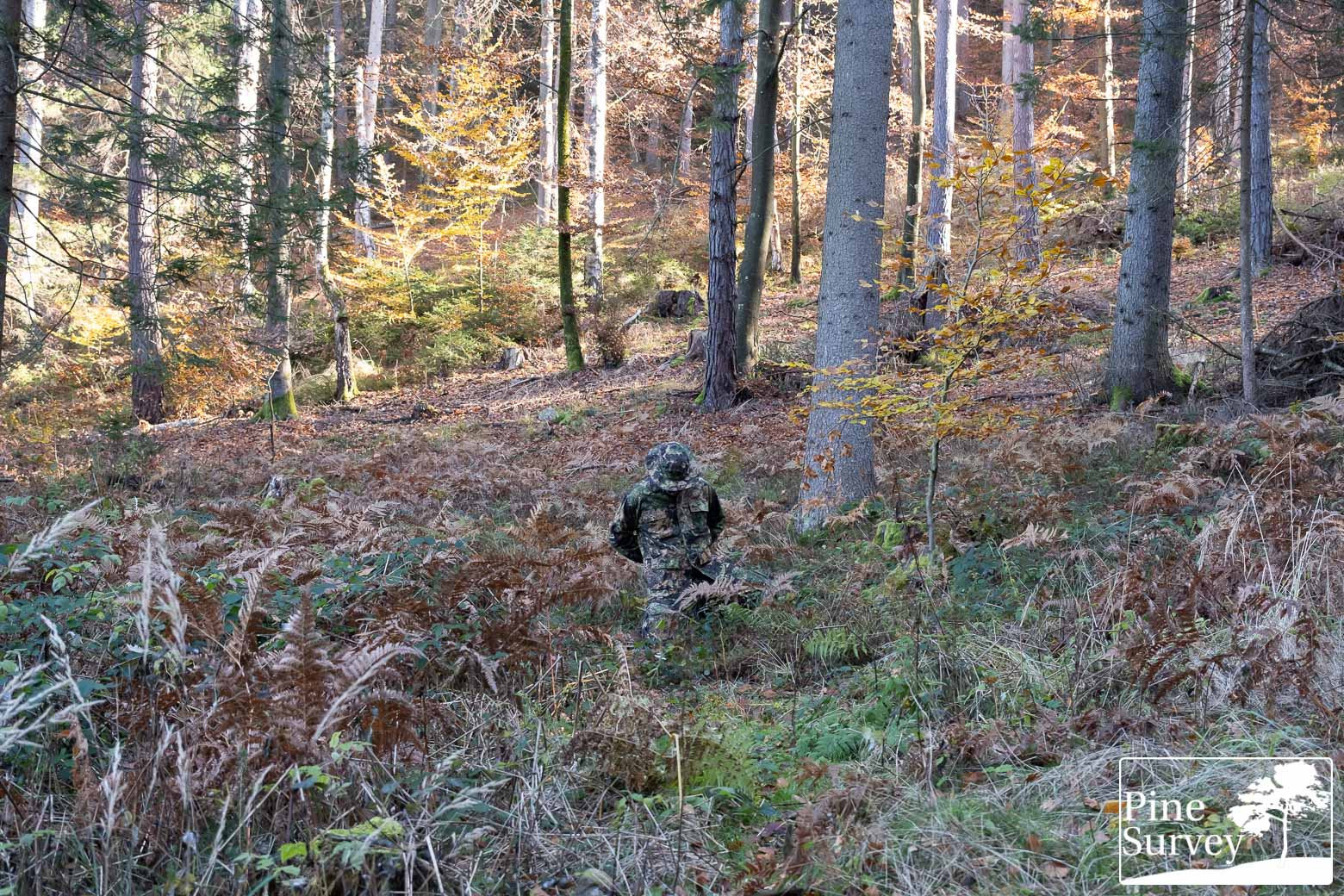
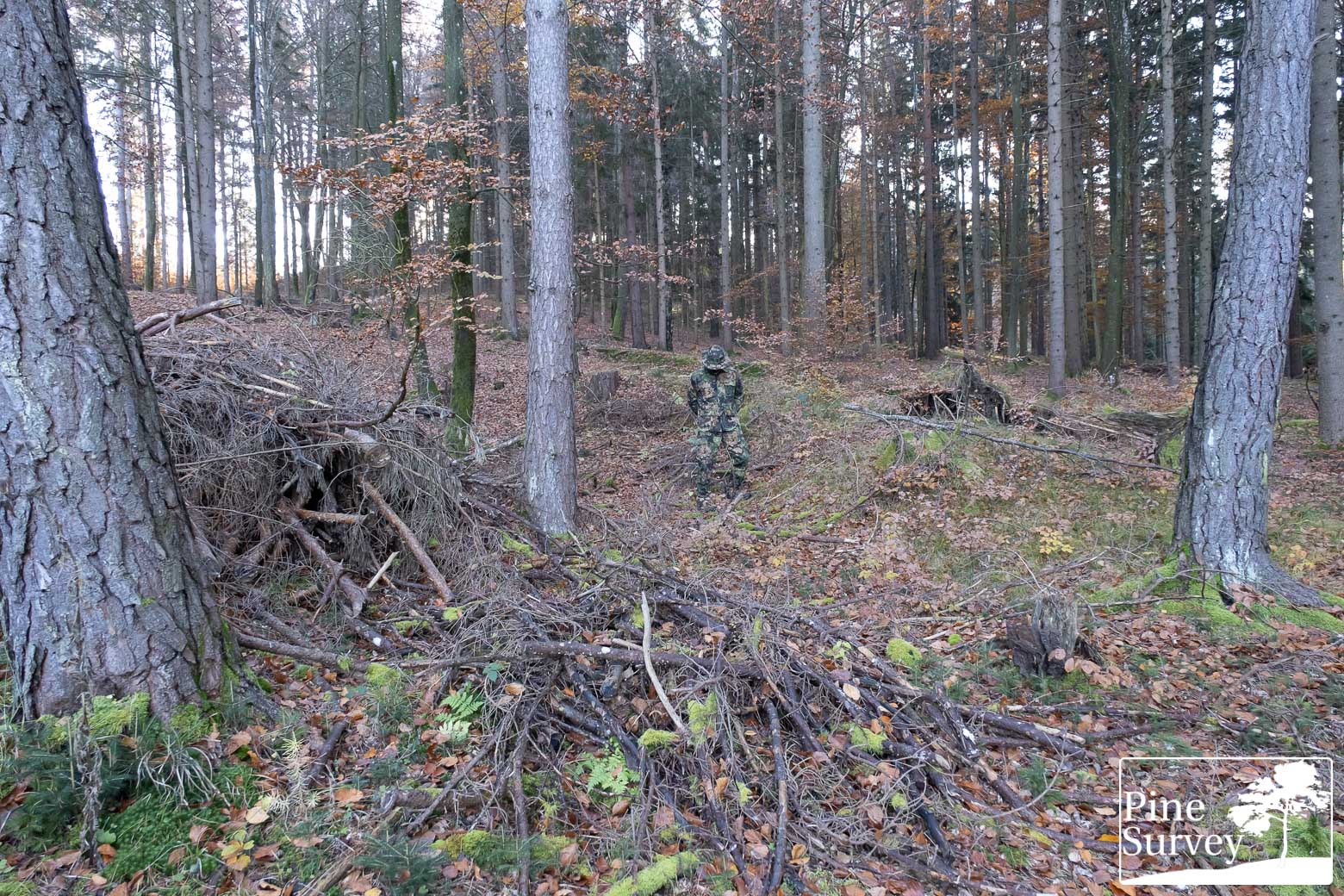
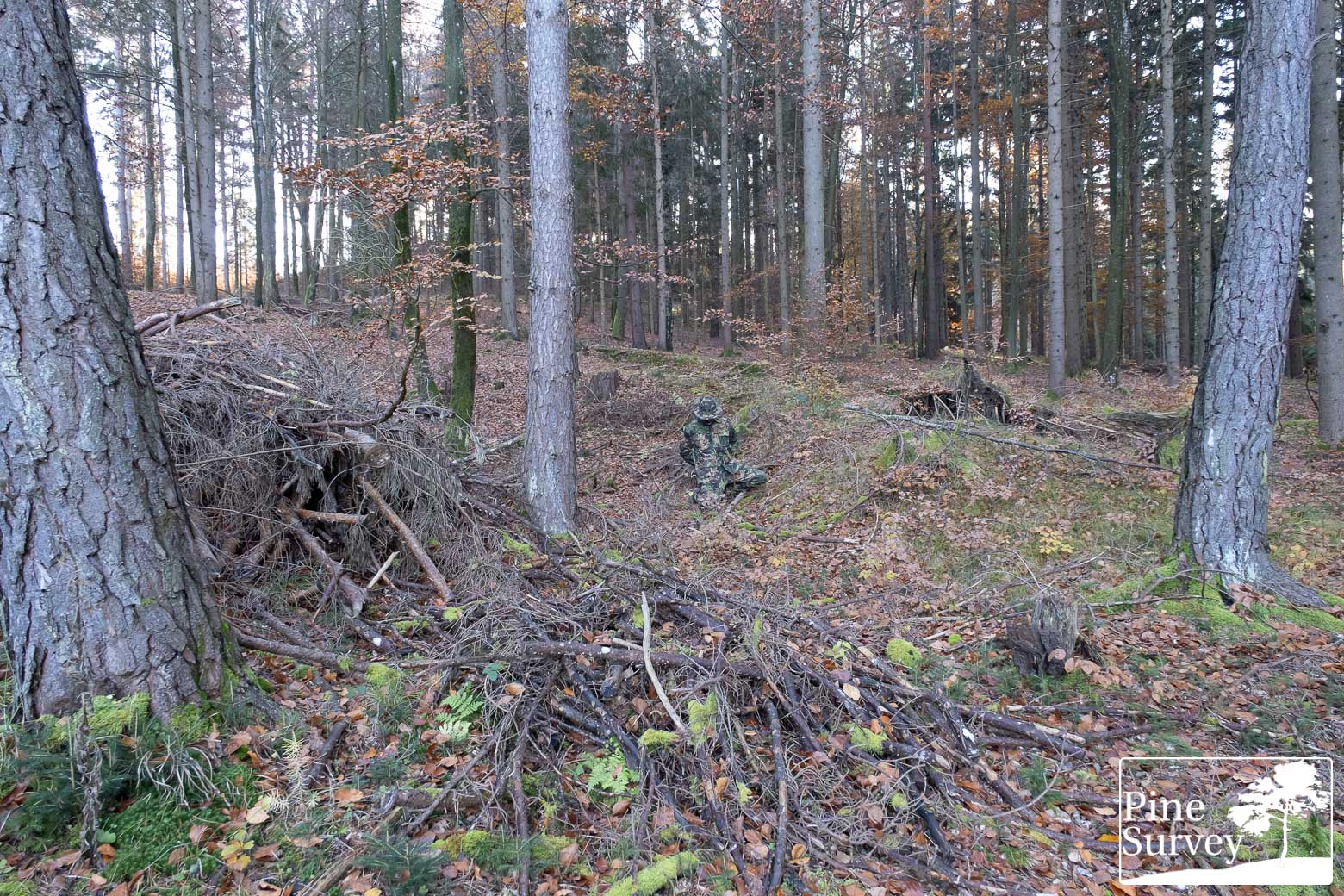
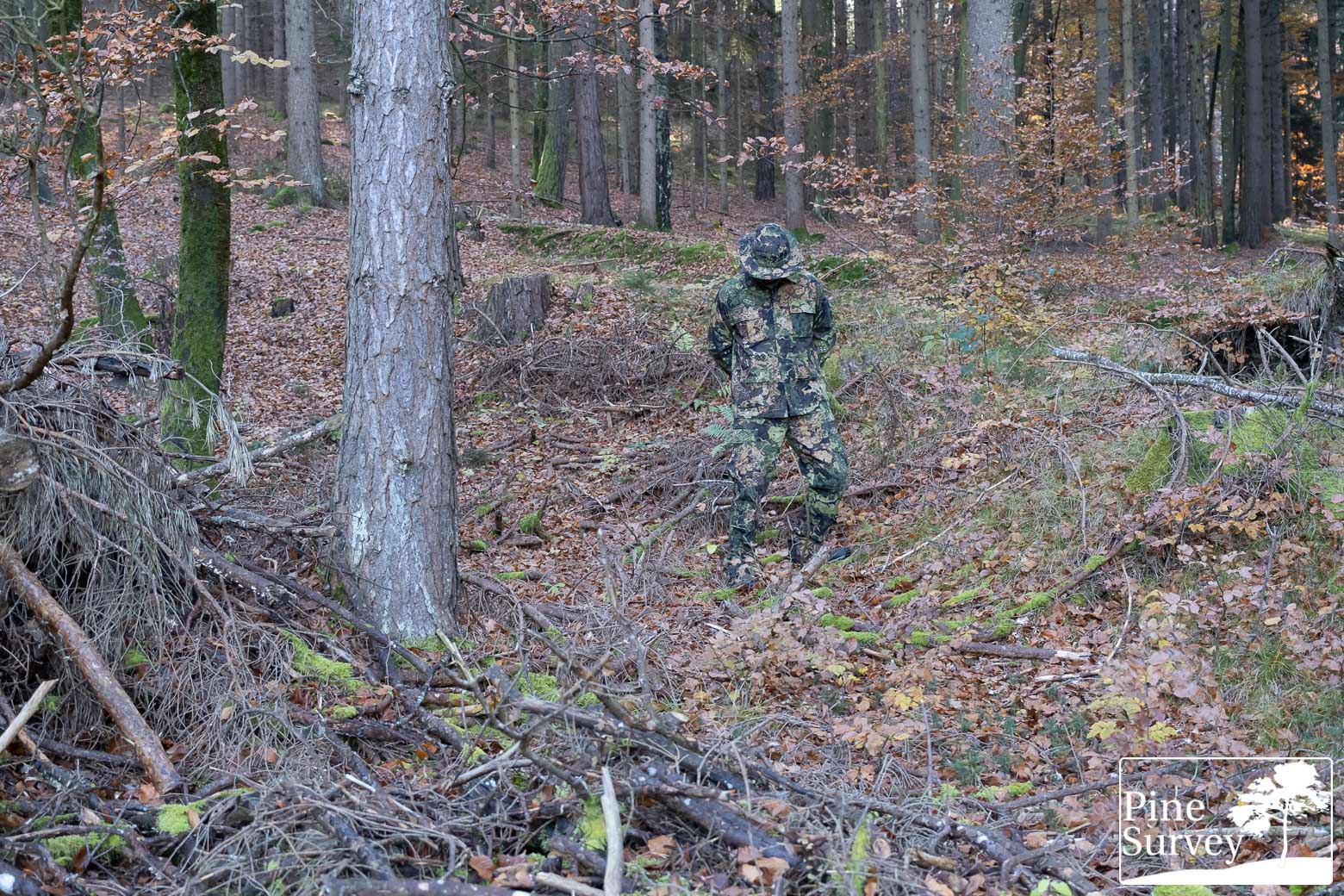
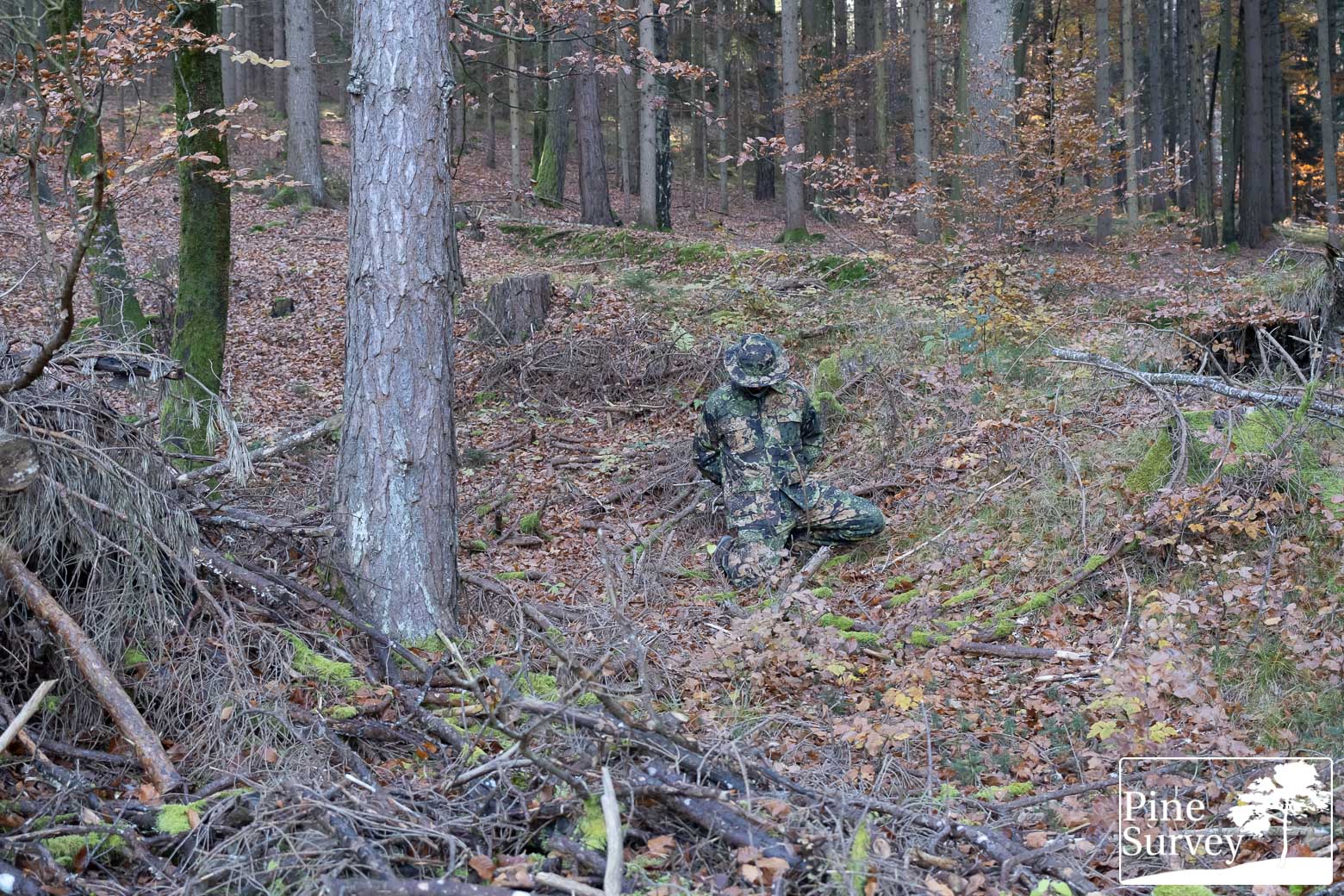
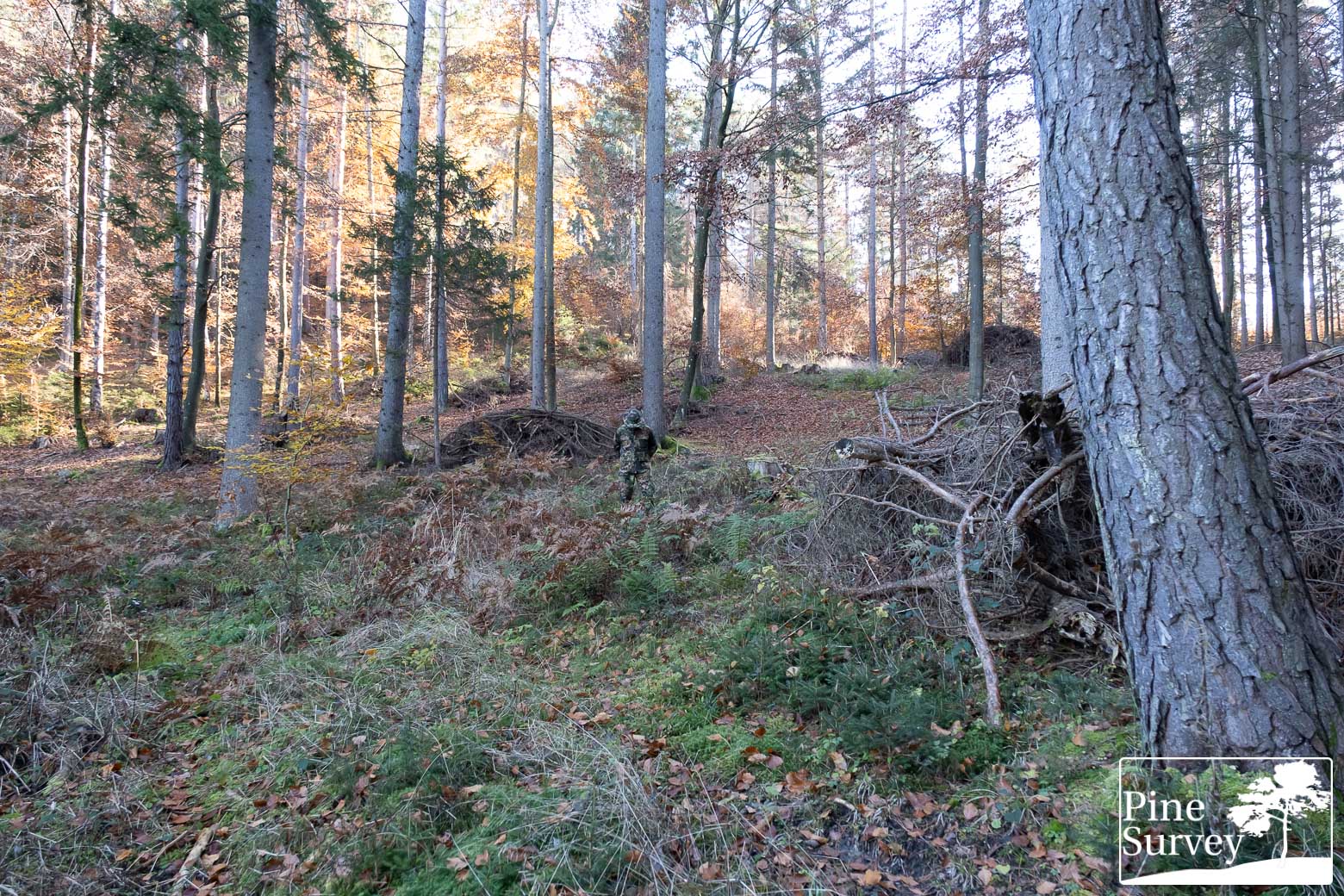
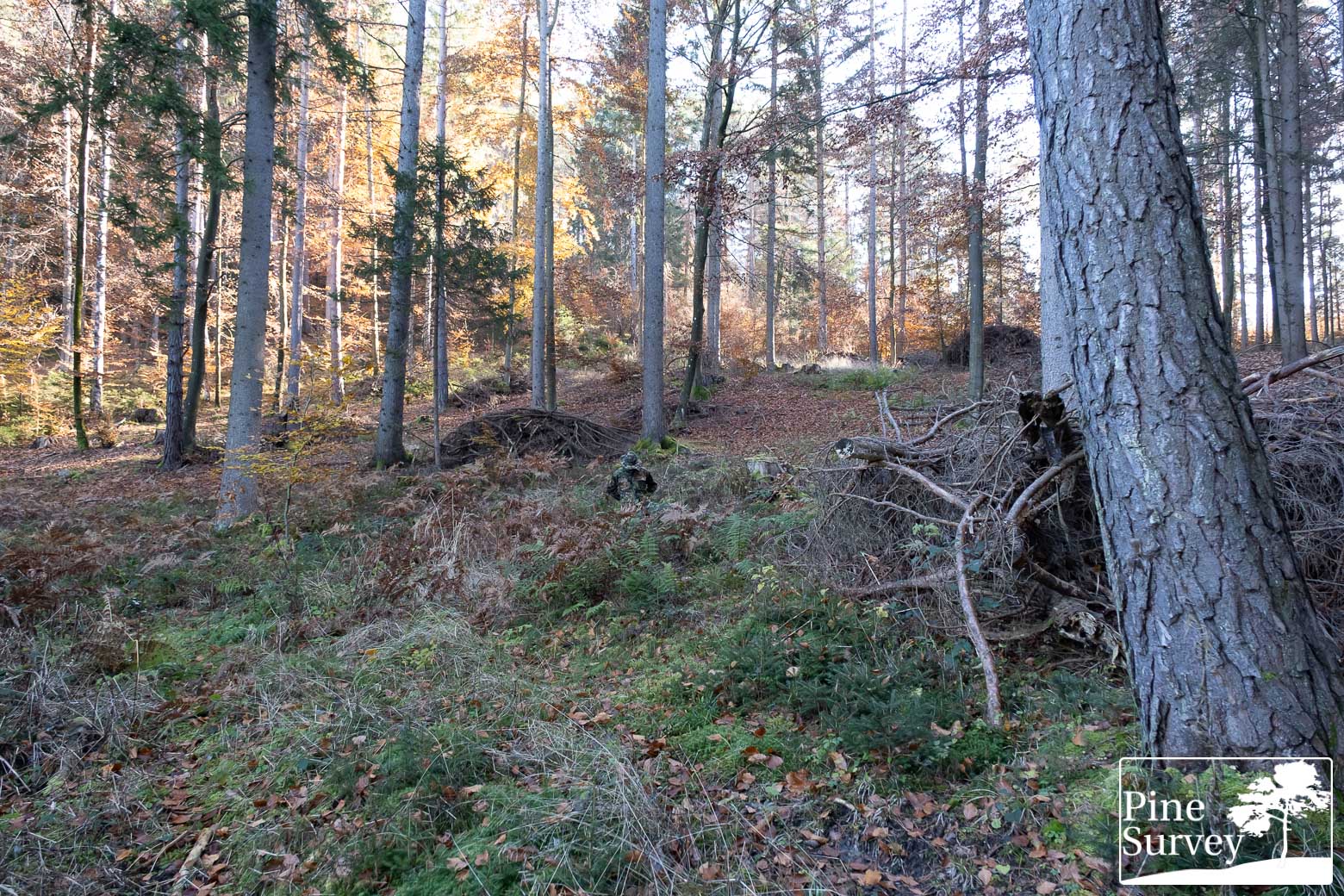
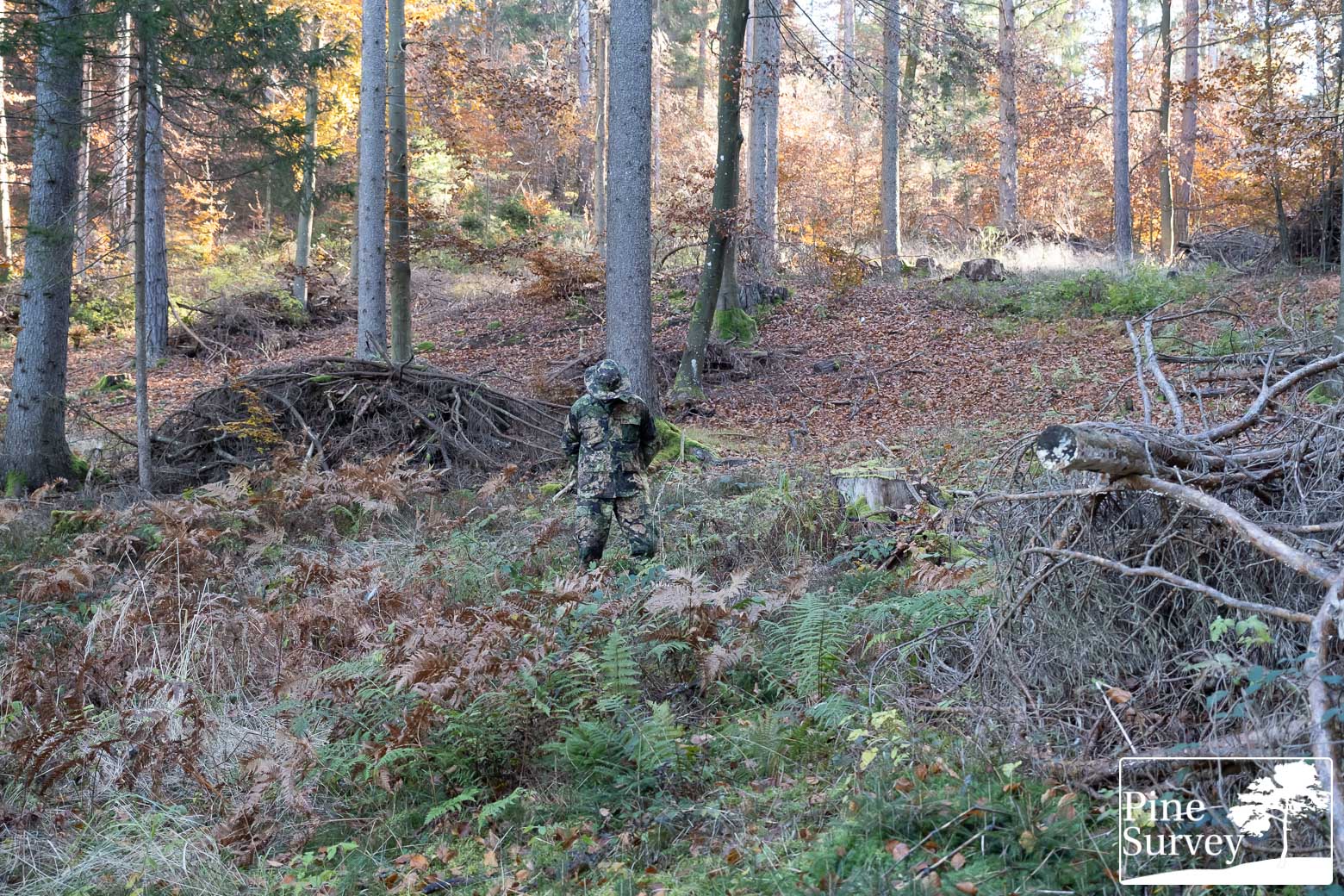
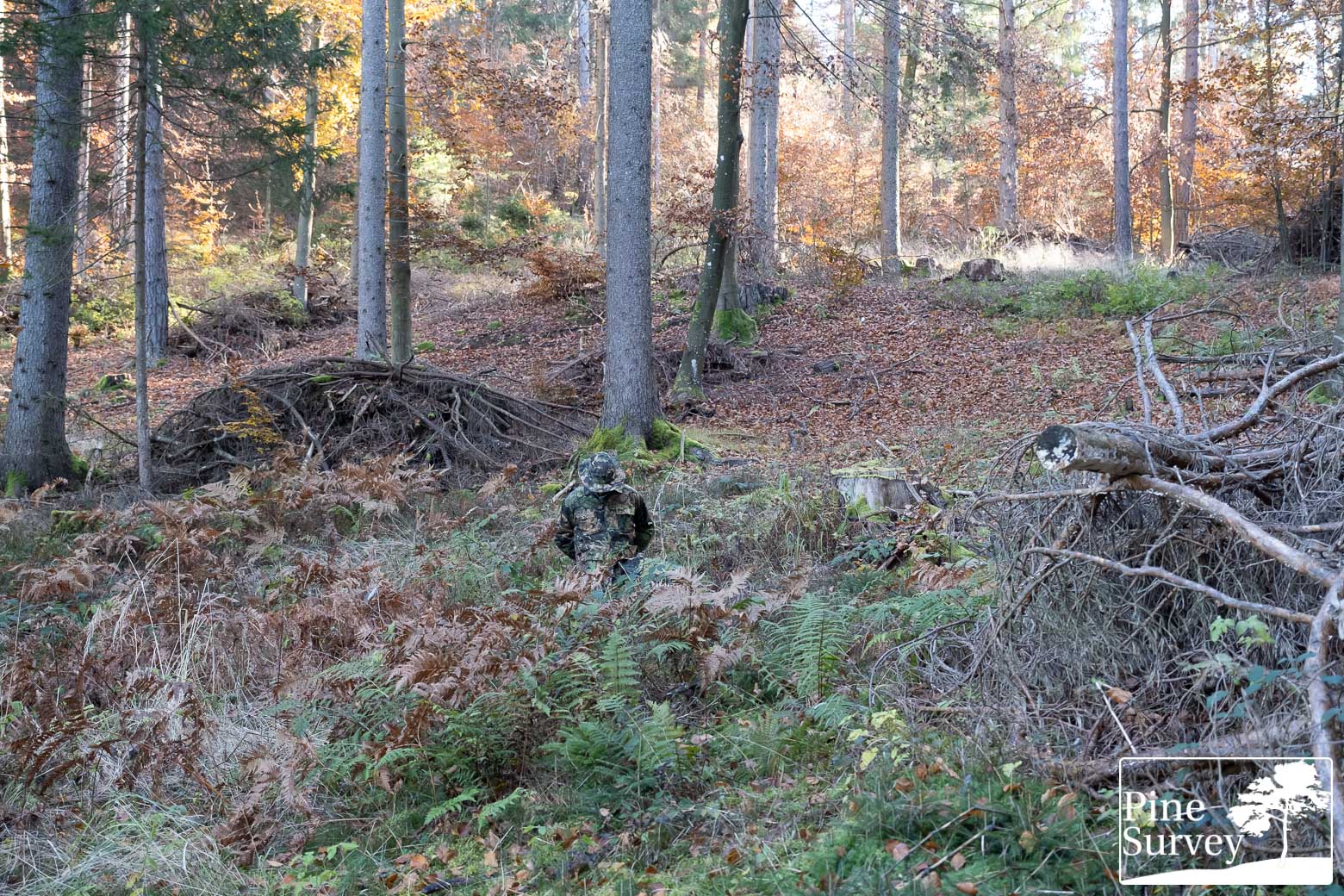
Conclusion
The difference between the Z3a versions of WASP I and WASP II could not be bigger. Both being designed for environments with high vegetation and no snow cover, it is a good reminder that not every temperate environment looks the same and one still has to plan accordingly when choosing a camouflage pattern.
While WASP II Z3a is more green dominant and brighter with the strong dark contrast, WASP I Z3a features more brown tones in order to blend into different green environments. It is in fact a bit more specific and appears to be darker. At the same time it is way more effective when being used in the specified environment.
Personally I find it more interesting, as it features colors similar to the government restricted pattern of Phantomleaf.
With its various colors, it is more fitted to late early spring, late summer and autumn, as purely lush green environments of early summer will put every camouflage pattern to the test.
The lighting conditions were not perfect for this particular article and I hope I was able to give a decent impression of Phantomleaf WASP I Z3a’s performance, even though mine as a photographer was lacking this time. Nevertheless I think the addendum with the pictures during Autumn gave an additional insight.
With that being said, many thanks to Phantomleaf and Mil-Tec for making this article possible!
Thank you for reading!
Take care!
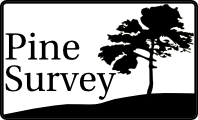
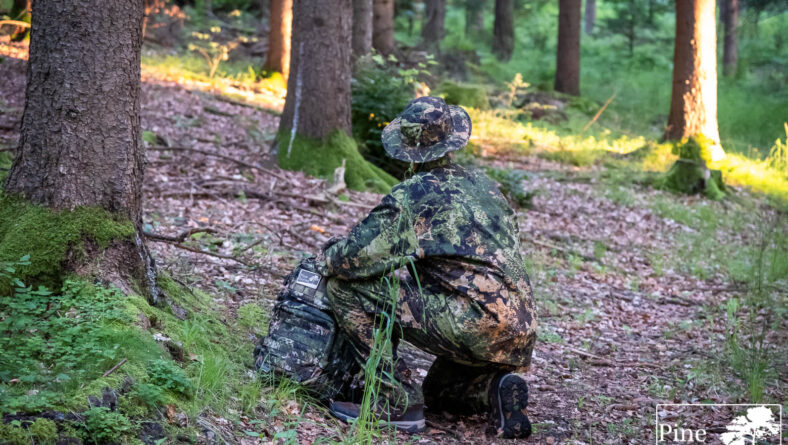
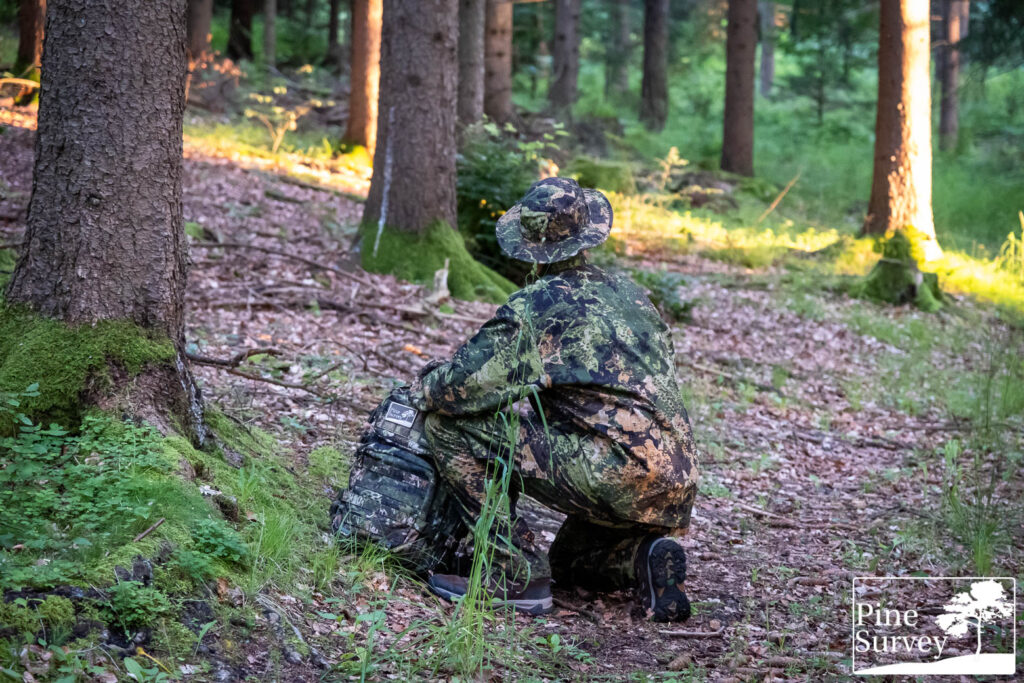
No Comment
You can post first response comment.